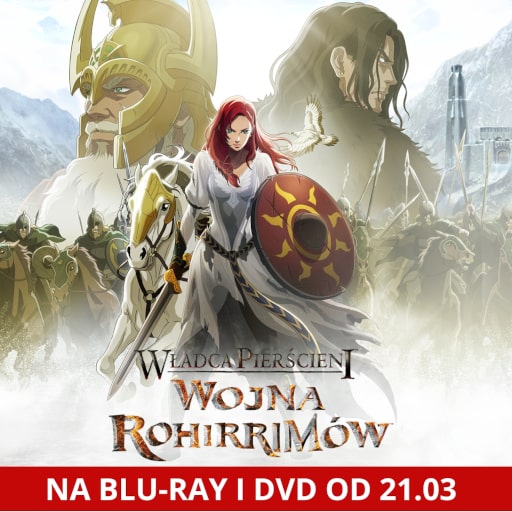High expectations
Boonlake did not have an easy task, hitting my table. Alexander Pfister created the brilliant Great Western Trail game , which is still at the forefront of my favorite titles, and soon we will be able to enjoy its refreshed version thanks to Lacerta’s release. Therefore, with high expectations, I opened a new box, wondering what was waiting for me this time.
There are a lot of components, so it will take a few minutes to unfold everything. Place the board in the center of the table and place the region markers on it. Next to it, we place terrain tiles and pastures adapted to the number of players, tokens of vases, levers and coins, a pile of project cards, an action board with seven tiles in random order.
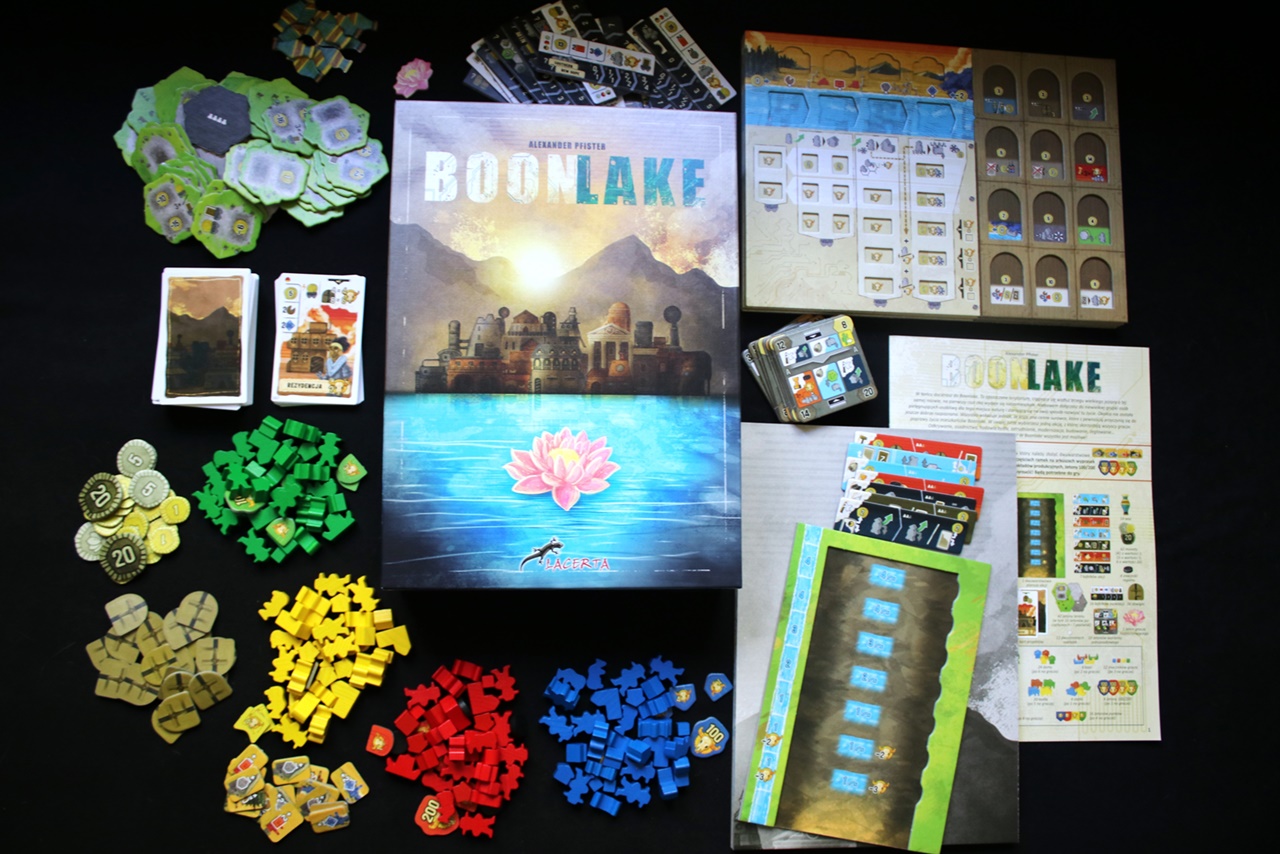
Everyone draws six project cards, coins and receives their own small board and elements of the selected color: houses, cities, cattle, residents and two boats, which they place in the appropriate slots, point tokens and four production plants. On the other hand, the ship and three markers of each player go to the main board on the appropriate tracks and the beginning of the river.
It remains to choose one of the production plants, which immediately goes to our board, and the scoring tiles, which should be placed on the bottom of the large board.
We only have two rounds to play, but they will be quite long. Their time is measured by ships which, after exceeding certain points on the river, stop the game for a moment to add up the points. There will be a total of four such stops, and after the last batch will be over.

Produce, grow, develop
And what awaits us on the way? The ship is placed in spaces that provide immediate benefits, such as cards, vases, or coins. To move, you must choose one of the Action Tiles. The number below it indicates the maximum number of spaces we can swim by, while what on the tile indicates the actions for this turn – on the left those performed by the active player, and on the right those used by everyone. And here begins figuring out what to do in what order.
For example, we can play or sell a card of a given type, place a terrain tile with an inhabitant, house or cattle on it, upgrade a hut, get coins, cards, or levers. We can’t just look at the stocks, but also the distance we can swim, because choosing one of the two lowest tiles will give us negative points. Their order changes, of course, as the chosen tile goes down and moves the rest up.
The above dilemmas – how far to move the ship and which actions to take – lead to the main board. It is on it that we will place pawns, thanks to which we will develop our village. On the other hand, we will remove them from the board, revealing further benefits, improving production facilities and arranging levers. Everything is related, so by taking one action, we trigger a benefit that improves the thing and affects something else. This is what the fun is all about.
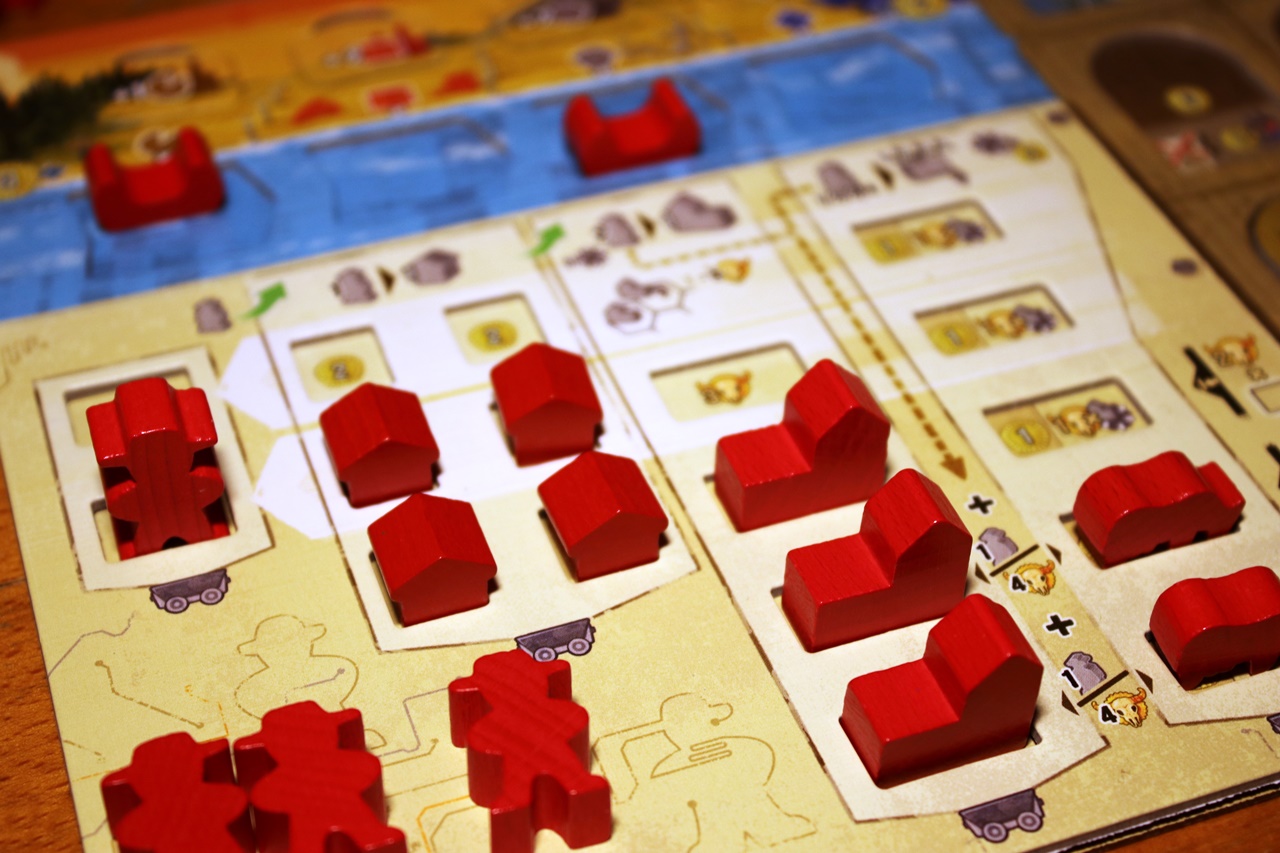
Is it worth settling down in Boonlake ?
If you are a fan of Euro games that require planning a few moves ahead – yes. For people who like longer games, which force them to rethink their actions, understand the relationship between actions and many paths of development, it will be a very good proposition.
In this type of title, there is usually no interaction between players or there is not enough of it that everyone plays for themselves, and during the turns of others, you can take a nap. Here, this problem is solved by action tiles, which always consist of parts for the active person and for everyone, so while waiting for your move, we carry out some actions anyway. And this does not always mean something good, because the gift of expansion, when we do not have the necessary inhabitant, is a medium hit. Instead, it can also be part of the active player’s tactics to trigger an action that someone else cannot use anyway.
In addition, we do not focus only on removing new pieces from our board, but also on taking areas on the main board. This is where we create a settlement for our inhabitants, graze cattle and improve buildings. There are better and worse places, so the race for those with greater profits and more favorable locations has been going on from the very beginning.
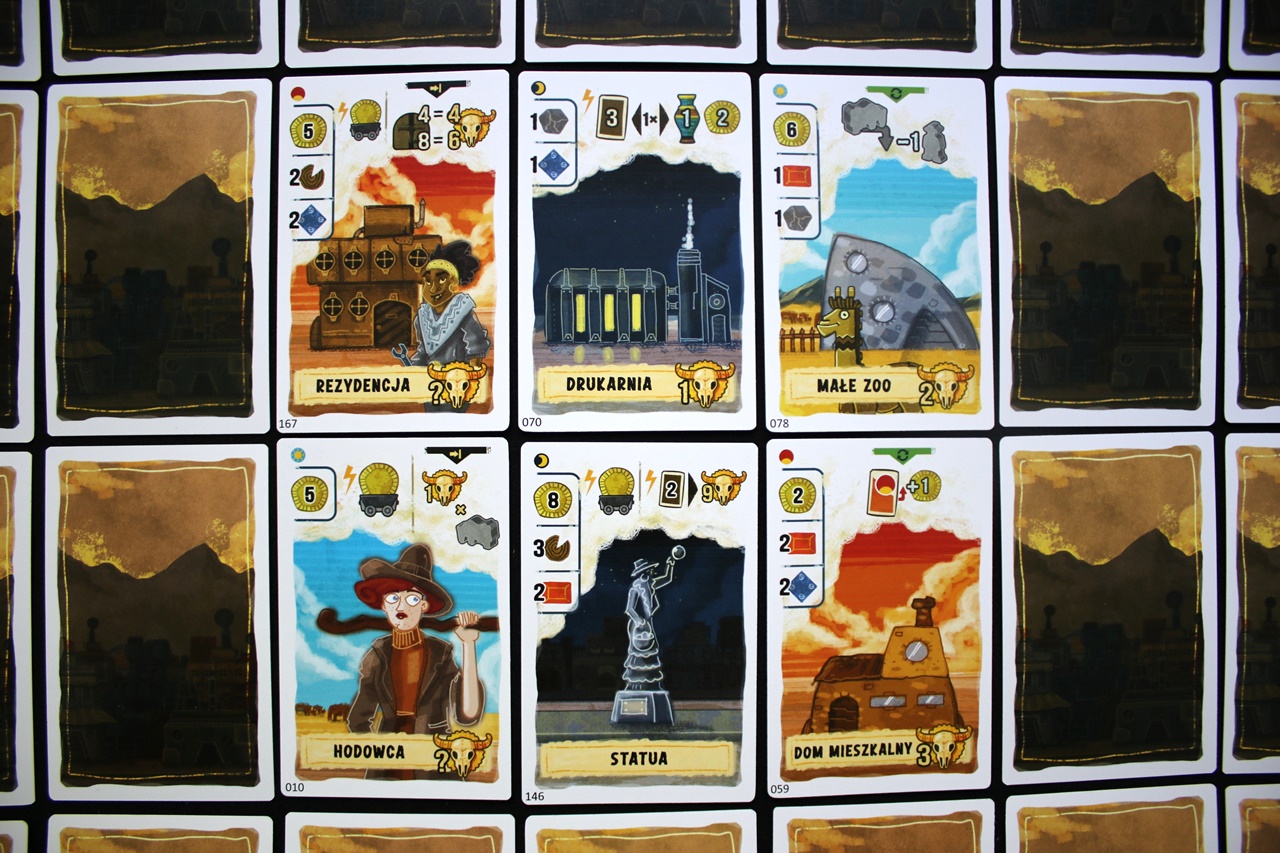
The workmanship of the components is solid, although graphically not a great frenzy. Mostly it’s all about icons that can overwhelm less experienced players at first. After a few turns, the symbols become understandable and there is no need to look at the instructions to decode them, although during the first game we had to go back to the rules a few times and dispel some doubts.
Fans of atmospheric games will find nothing for themselves here. Although theoretically we get information that we will try to settle the area around Boonlake , the story ends there. The graphics are also quite sparse and add little, and ultimately it’s all about icons, optimization of moves and points.
Boonlake is comparable to a few other titles, but only partially. Moving on the river and collecting profits reminded me of the Ganges , although swimming there does not end the game. There are also some similarities to the Great Western Trail by the same author mentioned at the beginning.
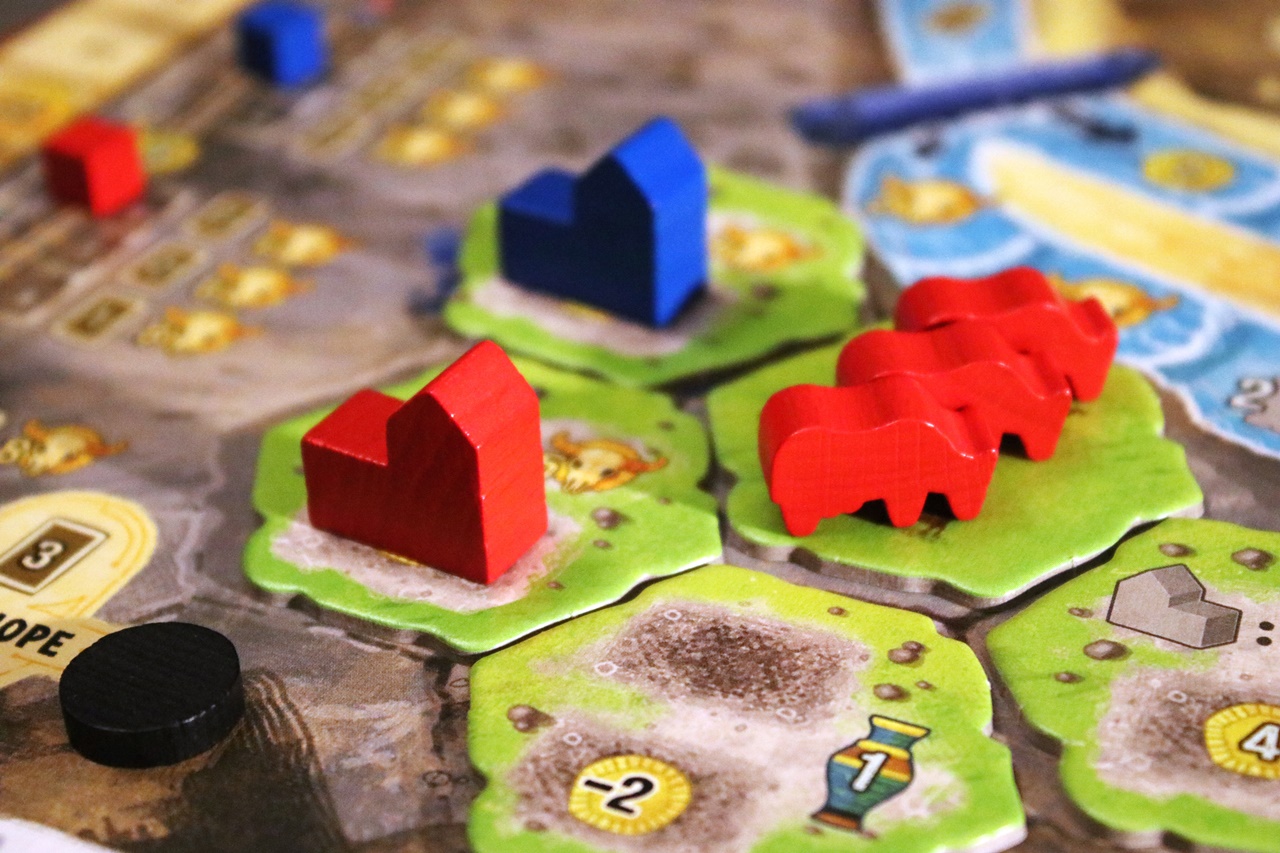
What distinguishes the reviewed game most from others in the same category is an interesting method of selecting actions, which punishes you for wanting to take the same actions in a row, but gives you more opportunities to move the ship with long unused tiles. These decisions affect not only what we can do in a given turn and what to collect on the river, but also regulate the speed of the game, the timing of which depends on our cruise. Therefore, depending on more or less conscious choices, we can spend 2 or 4 hours above the table, and probably longer with the full composition.
Boonlake is a good eurogame that, after initially misunderstanding some icons and rules, turns out to be a less complicated title than it sounds. However, it still remains in the category of positions for the more advanced players as the less experienced will be overwhelmed by the possibilities and lack of knowing which direction to take. I would like to return to this title more than once, but when it comes to Alexander Pfister’s work, his best creation is still the Great Western Trail . Despite some similarities in feelings, these are quite different games, so it’s worth trying both, especially since according to BGG they have almost the same difficulty level (3.71 and 3.72).
